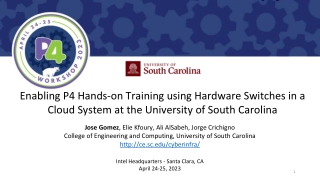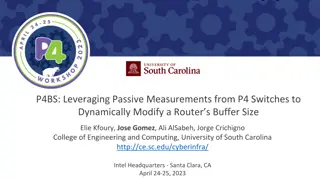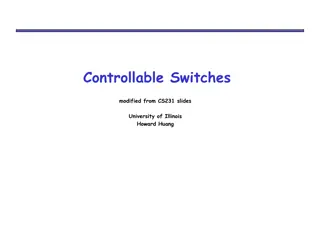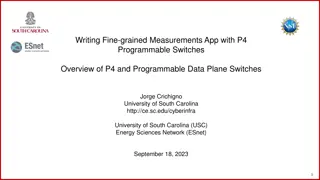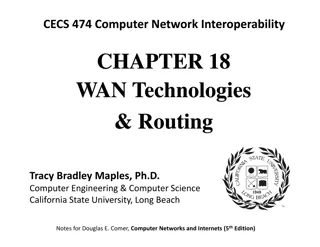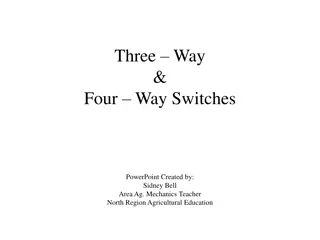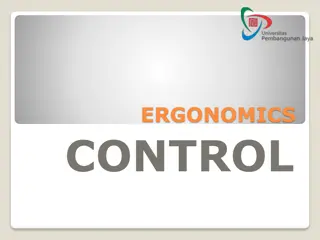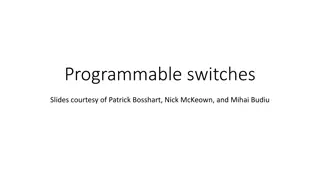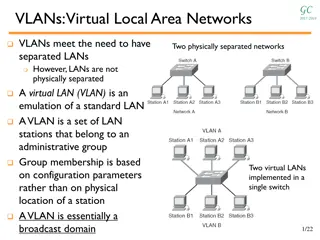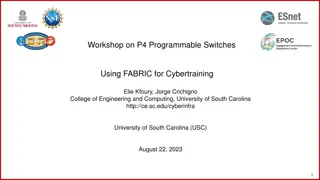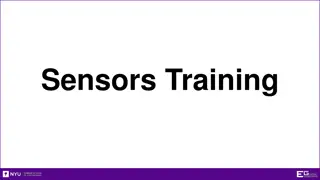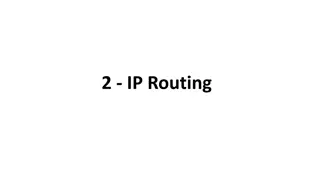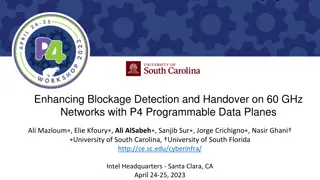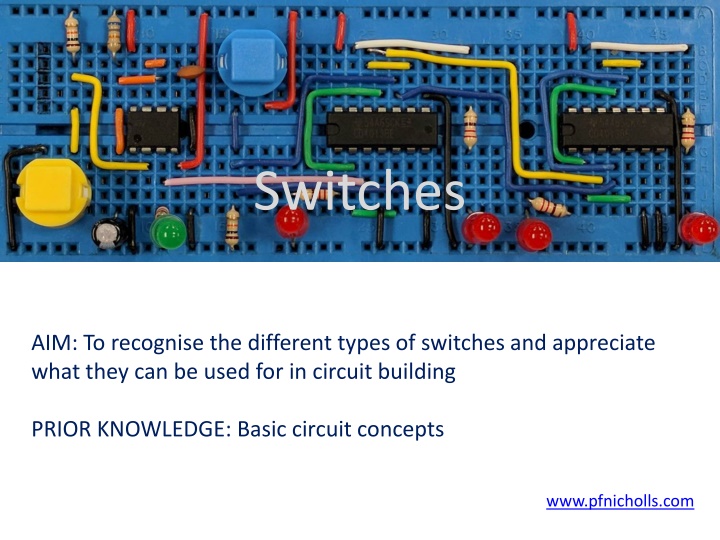
Various Types of Switches for Circuit Building
Learn about different types of switches like SPST, SPDT, DPST, and DPDT, their functions in circuits, and applications in circuit building. Enhance your knowledge of switch functionalities and improve your circuit-building skills.
Download Presentation

Please find below an Image/Link to download the presentation.
The content on the website is provided AS IS for your information and personal use only. It may not be sold, licensed, or shared on other websites without obtaining consent from the author. If you encounter any issues during the download, it is possible that the publisher has removed the file from their server.
You are allowed to download the files provided on this website for personal or commercial use, subject to the condition that they are used lawfully. All files are the property of their respective owners.
The content on the website is provided AS IS for your information and personal use only. It may not be sold, licensed, or shared on other websites without obtaining consent from the author.
E N D
Presentation Transcript
Switches AIM: To recognise the different types of switches and appreciate what they can be used for in circuit building PRIOR KNOWLEDGE: Basic circuit concepts www.pfnicholls.com
Introduction Switches and buttons can either be normally open (NO) or normally closed (NC). These are important terms to know. A Normally Open switch is open (i.e it does not complete the circuit) until you operate it. A Normally Closed switch completes the circuit until you operate it and then the circuit is broken. The two push buttons shown look identical but the red one is Normally Open. When you push the button the contacts close and the circuit is complete. The black push button is Normally Closed. When you push the button the contacts open and the circuit is broken.
Single Pole Single Throw (SPST) This is the most basic ON/OFF switch. An example might be a switch on a plug socket which is either On or Off. Single Pole means there is just one switch - one wire in and one wire out. On each of the switches shown there are only two contacts. Single Throw means there is one position where the circuit is complete, in the other position the circuit is broken.
Single Pole Double Throw (SPDT) This switch has two positions, both of which can be used to complete the circuit and hence it is called a Double Throw. An SPDT switch is used to provide stairwell lighting where the lights can be switched on from either the top of the bottom of the stairs. The switches shown have three connections. The connection that is connected to one pole or the other is called the Common (C) connection.
Double Pole Single Throw (DPST) This is a pair of single pole switches that are electrically separate but are linked to the same mechanical switch. When you switch the switch, both switches switch together. The dotted line on the diagram represents the mechanical connection. Double Pole because there are two switches. Single Throw because there is only one position where the circuit is complete. A DPST switch is often used for switching mains operated devices as both the Live and Neutral wires are switched on or off simultaneously.
Double Pole Double Throw (DPDT) This is a pair of double pole switches that are electrically separate but mechanically linked. An interesting use of a DPDT switch is to reverse the polarity of a motor. DPDT switches are also useful for routing signals in audio equipment where two separate switches are needed for the left and right stereo channels.
Rotary Switch This switch can choose one of many positions. This is the sort of switch that might be used as an input selector on a HiFi. The switches come with different numbers of poles, the one shown in the diagram is a 4 pole rotary switch. The photograph is of a stereo 6 pole rotary switch meaning there are two independent switches on the same rotary shaft, each with 6 switch positions.
Dual In Line (DIL) Switch These switches can be used to create inputs to logic circuits or to set digital values for a logic circuit. The switches are mechanically and electrically separate but are physically joined in a convenient block which can be more than just the four switches shown in the diagrams.
Micro Switch A micro switch is NOT a very small switch. Very small switches do exist but these are just normal switches. A micro switch is one that requires a very small force to operate it so that it is easy to switch. Micro switches are used in sensors and control equipment. Micro switches are spring loaded. Their normal state is when no force is applied and the switch is not activated. When a force is applied, the switch is activated. When the force is removed the switch returns to its normal state. Micro switches are more like push buttons because they return to their normal state when the force is removed.
Micro Switch (2) The micro switch shown has three connections. These are the Common (C), the Normally Open (NO) and the Normally Closed (NC). When the micro switch is in its normal state and the switch has not been activated, the Common is connected to the Normally Closed connection. When the micro switch is activated, which is not its normal state, the Common is connected to Normally Open connection. The circuit symbol shows the switch in its normal state.
Reed Switch A switch that is operated by a magnetic field. The two poles of the switch are made from magnetic material. Holding a magnet near to one side of the switch induces a magnetic field in the metal contact which is then attracted to the other contact completing the circuit. The reed switch is usually enclosed in a coil of wire, a current in the coil causes the reed switch to close. In this sense the reed switch is much like an electromagnetic relay and is sometimes called a reed relay.
Proximity Switch A switch that is operated when something is nearby but no physical contact is necessary. The example shown is part of an alarm circuit on a fire door. The brown block on the door frame (right hand side) is a reed switch in this case and the brown block on the door (left hand side) is a magnet. There are other types of proximity switch that do not involve magnets.
Key Switch A switch that is operated by a key such as the ignition switch on a car. Key switches can be used as the reset switch for an alarm system. Once the alarm is triggered, only a key holder can turn the alarm off and reset the system.
Push buttons These switches generally turn on when you push them and turn off again when you release them. On the examples shown there are four legs but the push button is a simple switch needing only two contacts. The four legs are actually two pairs of legs and pushing the button connects one pair of legs to the other. Four legs are useful to stop the push button falling over and give it mechanical stability. Push buttons are used in computer keyboards and keypads.
Summary Switches have contacts that are either Normally Open (NO) or Normally Closed (NC) An individual switch is called a POLE. Switches can have 1, 2 or many poles The action of a switch is called a THROW. Switches can be single throw or double throw Buttons and micro switches return to their normal state when the force is released Specialist switches are available for particular applications e.g. a key switch or a magnetic switch
Questions 1. How is the most basic ON/OFF switch described? 2. Why is a micro switch not necessarily very small? 3. What type of switch should be used for controlling a mains operated appliance? 4. What type of switch is used at the top and bottom of stairs? 5. How is a button different from a switch? 6. What type of switch can have more than 2 poles? 7. What type of switch could be used for setting data values in a logic system?
Answers 1. Single Pole Single Throw ( SPST) 2. Micro refers to the force required to operate it, not the physical size 3. Double Pole Single Throw (DPST) 4. Single Pole Double Throw (SPDT) 5. A button returns to its normal state when the activating force is removed 6. Rotary switch 7. DIL switch


